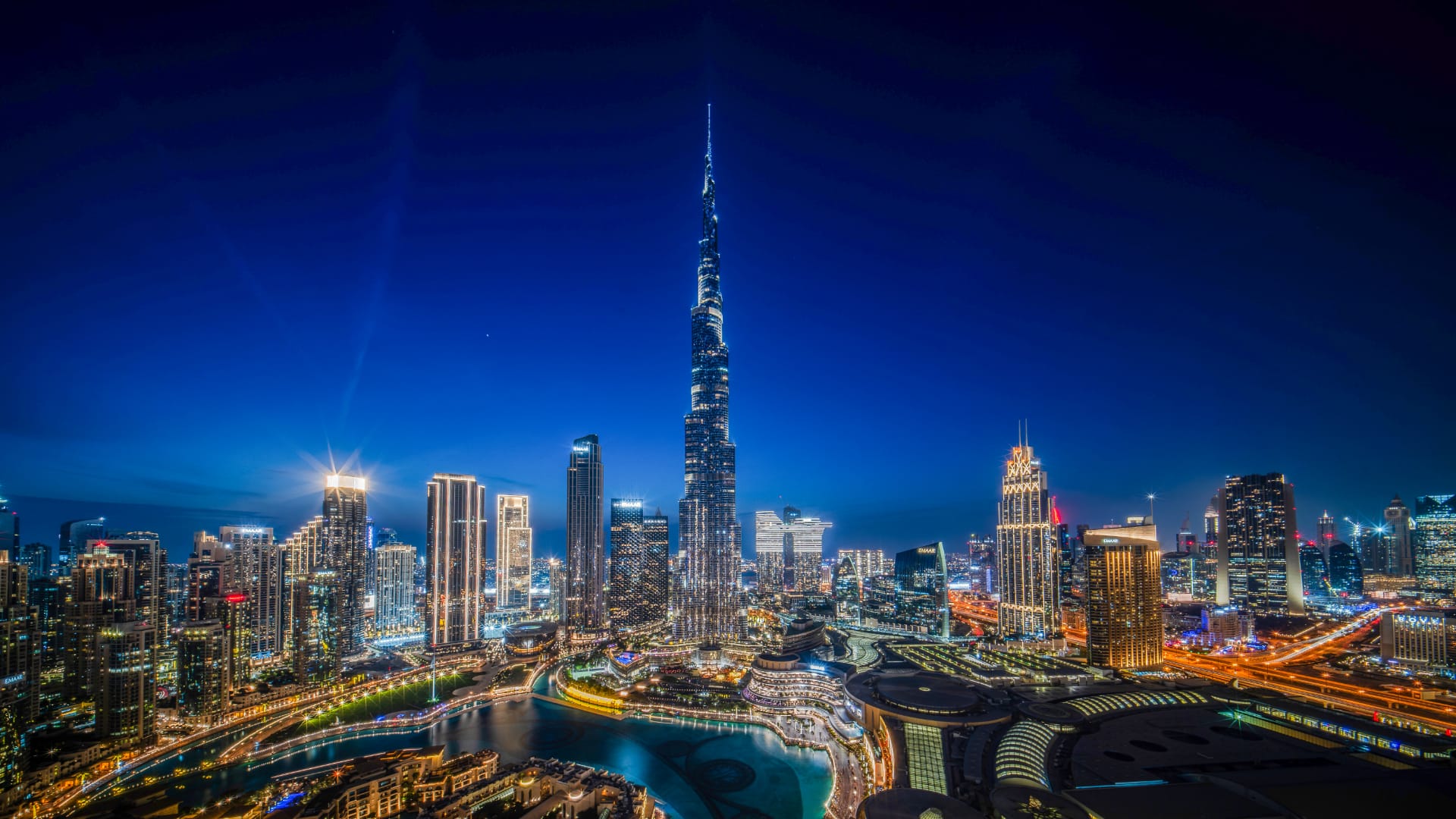Exploring the Marvel of Modern Architecture: The Burj Khalifa

In the heart of Dubai, a city known for its futuristic skyline and luxurious lifestyle, stands a marvel of modern engineering and architecture: the Burj Khalifa.

This iconic skyscraper, piercing the sky at a staggering height of 828 meters (2,717 feet), is the tallest building in the world and a symbol of human ambition and ingenuity. Since its completion in 2010, the Burj Khalifa has captivated millions of visitors and continues to be a focal point of Dubai’s ever-evolving landscape.
A Vision Realized
The Burj Khalifa was conceived as part of a larger initiative to diversify Dubai’s economy from oil dependency to tourism and services. The project was developed by Emaar Properties, with the design spearheaded by the renowned architectural firm Skidmore, Owings & Merrill. Adrian Smith, the chief architect, drew inspiration from Islamic architecture, particularly the spiraling minaret, to create a structure that is both modern and deeply rooted in cultural symbolism.
Construction began in 2004, and over the next six years, the Burj Khalifa rose from the desert sands, setting new benchmarks in engineering and design. The building’s Y-shaped tripartite floor geometry is designed to optimize residential and hotel space while providing structural stability. This innovative design allows the tower to withstand Dubai’s harsh weather conditions, including high winds and extreme temperatures.
Engineering Feats and Challenges
Building the world’s tallest structure was no small feat. The Burj Khalifa’s construction involved some of the most advanced engineering techniques and materials. The tower’s foundation is supported by a robust concrete and steel structure, with over 192 piles buried more than 50 meters deep. The exterior is clad in reflective glazing, aluminum, and textured stainless steel spandrel panels, which help reduce heat absorption and glare.
One of the most significant challenges faced during construction was pumping concrete to unprecedented heights. Engineers developed a new high-pressure pumping system capable of delivering concrete to the uppermost floors, a process that required meticulous planning and execution. Additionally, the tower’s design incorporates a series of setbacks that not only enhance its aesthetic appeal but also reduce wind forces, ensuring stability.

A Multifaceted Experience
The Burj Khalifa is more than just a skyscraper; it’s a vertical city offering a range of experiences for visitors and residents alike. The tower houses the luxurious Armani Hotel, designed by fashion icon Giorgio Armani, which occupies the lower floors. Above the hotel, the building features over 900 private residences, including one-, two-, three-, and four-bedroom apartments, offering breathtaking views of the city and the Arabian Gulf.
For those seeking a unique dining experience, the Burj Khalifa offers several world-class restaurants. At.mosphere, located on the 122nd floor, is one of the highest restaurants in the world, providing diners with an unparalleled culinary journey amidst the clouds. The tower also includes corporate suites, a health and wellness center, and the Burj Club, which features a state-of-the-art gym, spa, and rooftop pool.
The Observation Decks
No visit to the Burj Khalifa is complete without a trip to its observation decks. “At the Top” is located on the 124th and 125th floors, offering panoramic views of Dubai’s skyline, desert, and ocean. For an even more elevated experience, visitors can ascend to the “At the Top, Burj Khalifa SKY” on the 148th floor, which, at 555 meters, is the highest observation deck in the world. These decks provide a unique perspective on the city’s rapid development and are a testament to Dubai’s vision for the future.
Cultural and Economic Impact
The Burj Khalifa has had a profound impact on Dubai’s cultural and economic landscape. It has become a symbol of the city’s ambition and a major tourist attraction, drawing millions of visitors each year. The tower’s presence has also spurred development in the surrounding Downtown Dubai area, which includes the Dubai Mall, the Dubai Fountain, and numerous hotels and residential complexes.
Moreover, the Burj Khalifa has set a new standard for skyscraper design and construction, inspiring architects and engineers worldwide to push the boundaries of what is possible. It stands as a testament to human creativity and determination, reminding us that with vision and perseverance, we can achieve the extraordinary.
The Burj Khalifa is more than just a building; it is a symbol of progress, innovation, and the limitless possibilities of human achievement. As it continues to dominate the Dubai skyline, it serves as a beacon of inspiration for future generations. Whether you’re an architecture enthusiast, a tourist seeking breathtaking views, or someone simply curious about the wonders of modern engineering, the Burj Khalifa offers an experience like no other. In a world where the sky is no longer the limit, the Burj Khalifa stands tall, inviting us all to dream bigger and reach higher.
